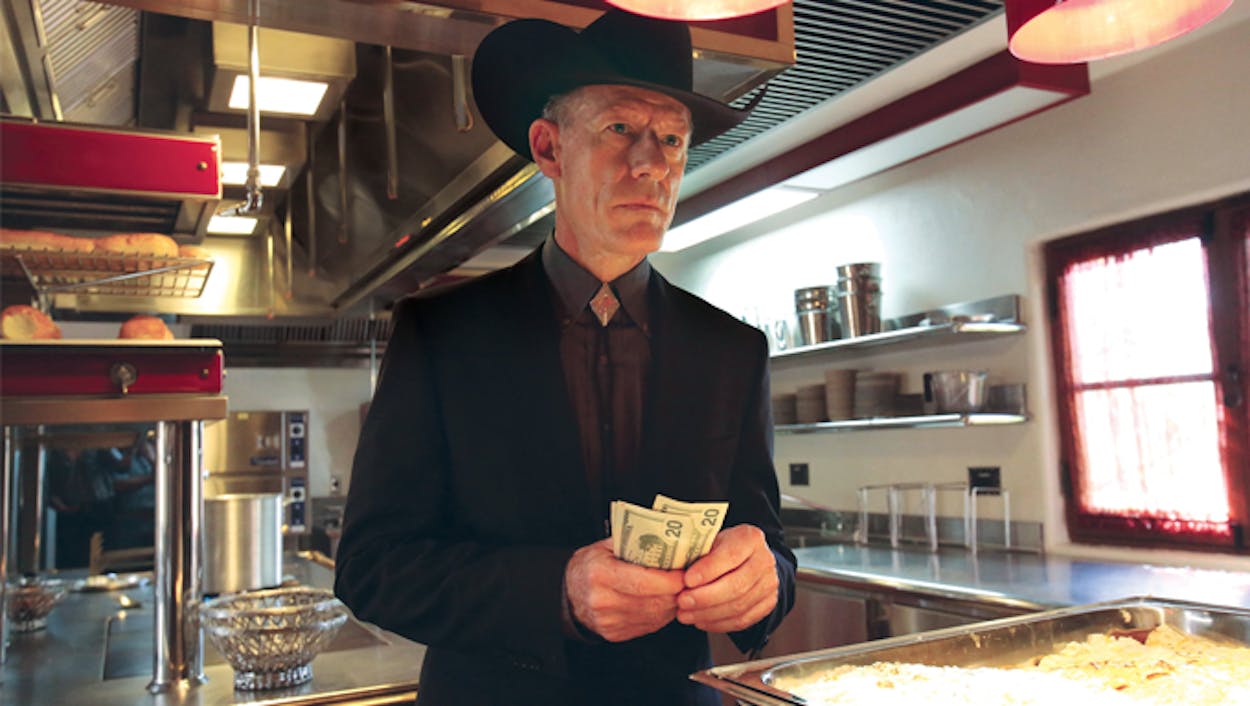Last year, the FX show The Bridge won a Peabody Award for “raising awareness of border issues” and indeed, many of the plotlines were based on the realities of life in El Paso and its violence-stricken Mexican sister city a bridge away, Ciudad Juárez. The show touches on drug cartel violence, labor issues, and the hundreds of women who have been murdered or gone missing in and around Juárez since the mid-nineties. The second season started last month amid headlines of the child and family migrant crisis, in which thousands of unaccompanied Central American minors crossed into the United States.
Yet producing a torn-from-the-headlines program was not what Elwood Reid, the lead writer and executive producer, intended. The first season opened on a border bridge where two bodies are discovered, each cut in half at the waist. One was a missing girl from Mexico, the other an anti-immigration Texas judge. The dual murders force detectives from both sides of the border to work together to solve the crime. As the plot thickens, the Central Intelligence Agency is linked to Mexico’s drug cartels.
“We do entertainment, not documentary,” said Reid, who has written three crime novels and came to The Bridge after co-producing and writing for Hawaii Five-O. “We don’t do issue episodes. Issues are threaded into the narrative, but if you pull that out, the narrative still stands on its own. I don’t want to ever be the show that forces you to eat your vegetables, like ‘Let’s all learn about immigration from a Hollywood liberal.’ I’m suspicious when that kind of stuff is fed to me, so I don’t want to feed it to other people.”
The program was not even inspired by the Mexico-American border. The series is an adaptation of Bron/Broen, a popular Scandinavian series set on the border of Sweden and Denmark (the original opens with a similar plotline). FX would have set it at the Ambassador Bridge, which connects Detroit and Windsor, Ontario if Reid and his co-producer for the first season, Cold Case creator Meredith Stiehm, had not objected.
“We thought we’d pretty quickly run out of gas trying to over-extenuate the differences between the Canadian and American sides,” Reid said. Although the show shoots largely on soundstages in Santa Clarita, California, camera teams regularly shoot exterior shots in El Paso and Juárez.
“There’s something cool and working class about El Paso, this town that sort of depends on its sister city—jobs flow back and forth across the border—but has also built a wall between them. And of course, it’s ground zero for all the immigration issues we’re talking about right now. That’s conflict we don’t have to make up or exaggerate.”
Not only is the material rich, but the show appeals to an audience that FX covets: Hispanics. According to Reid, viewers are estimated to be about fifteen percent Hispanic; this group is also fifteen percent more likely than the average household to watch the show. He said that was due in part to a relatively substantial portion of the program’s dialogue being in Spanish with English subtitles.
“Subtitles were something we initially thought long and hard about,” Reid said. “But with all the international content on Netflix, people aren’t as allergic to subtitles as they used to be. Particularly when you’re talking about Spanish—a language a lot of us hear on a daily basis. And when you’re having two characters in Mexico talking to each other, it would be dishonest not to have the subtitles.”
The show has also captivated a number of fans with a smaller, but authentically Texan, character: Monte P. Flagman, a drug cartel lawyer wearing boots and a cowboy hat that is played by Lyle Lovett.
Reid cast Lovett just before shooting began on the first season after circulating a casting memo describing Flagman as a stoic “Lyle Lovett-type,” only to find out that one of the program’s stars, Annabeth Gish, knew Lovett personally and was willing to direct message him about the role on Twitter.
Lovett plays Flagman deadpan. In the gory opening sequence of the second season, featuring a house full of dead bodies, Flagman tucks his pants into his cowboy boots so as not to stain them with blood. Reid said that was Lovett’s idea. Lovett said he was just glad that that blood was not his character’s.
“The first day I worked on set, Elwood told me, ‘Remember your role has the potential to develop, as long he doesn’t get killed off,’” said Lovett, whose acting résumé includes four films from director Robert Altman including The Player and Cookie’s Fortune. “I took that as slightly ominous warning.”
Shooting for season two of The Bridge wrapped earlier this month and its season finale is scheduled to air October 1. While FX has yet to green light the show for a third season, Reid said he was hopeful that the third season will get picked up. Lovett also has his fingers crossed.
“I get to work with great people, wear a hat and boots and drive a 1970 Coupe DeVille,” Lovett said. “I’m not ready to check out just yet.”






